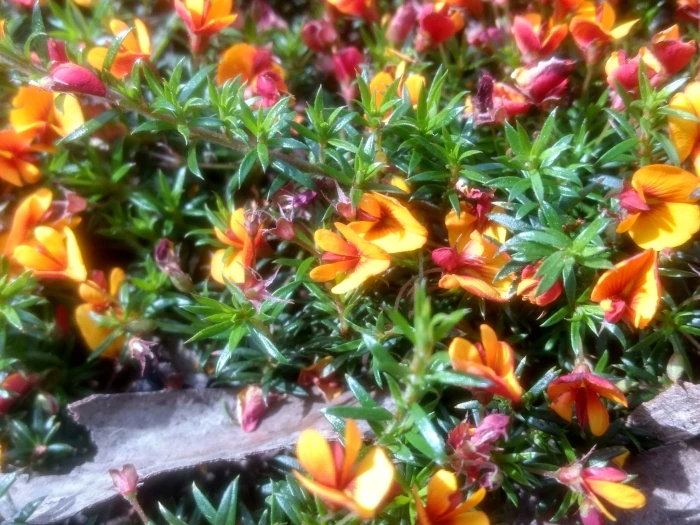Matted Bush-Pea
(Pultenaea pedunculata)
Matted Bush-Pea (Pultenaea pedunculata)
/
/

Elspeth Swan
CC BY 4.0
Image By:
Elspeth Swan
Recorded By:
Copyright:
CC BY 4.0
Copyright Notice:
Photo by: Elspeth Swan | License Type: CC BY 4.0 | License URL: http://creativecommons.org/licenses/by/4.0/ | Rights Holder: Elspeth Swan | Publisher: iNaturalist | Date Created: 2020-10-22T16:06:21-07:00 |





















Estimated Native Range
Climate Requirements for Köln, Germany
| This Plant | Your Site | Plant Suitability for Your Location | ||
|---|---|---|---|---|
| • Precipitation | 15" - 59" | 32" | Your precipitation may be too high for this plant. | Too high |
| • High Temp. | 61°F - 87°F | 74°F | Your summer temperatures are normal for this plant. | Excellent |
| • Low Temp. | 29°F - 50°F | 33°F | Your winter temperatures are normal for this plant | Excellent |
This plant may not grow well at your location - your precipitation is too high.
Summary
Pultenaea pedunculata, commonly known as matted bush-pea, is a prostrate, densely matted shrub endemic to a variety of habitats in southern Australia, including dry sclerophyll forests, coastal heathlands, and alpine grasslands. It is particularly adapted to well-drained, sandy or rocky soils and can be found from New South Wales to Tasmania. The plant typically forms dense carpets up to 3 feet in diameter, with softly-hairy branches that give it a distinctive texture. The narrow elliptic leaves are sparsely hairy, contributing to the plant’s overall soft appearance. The bright yellow to brick-red pea-like flowers are a highlight, blooming mainly from September to December and attracting a variety of pollinators.
Matted bush-pea is valued for its ground-covering abilities, making it useful for erosion control and as an ornamental feature in rockeries and native plant gardens. Its vibrant flowers add color to the landscape during its flowering season. In cultivation, it prefers full sun to part shade and requires well-drained soil, tolerating poor fertility and drought conditions once established. While it is endangered in New South Wales, it remains relatively common in other regions, suggesting that its cultivation could contribute to conservation efforts. Gardeners should be aware that this plant may require protection from grazing animals to ensure successful establishment.CC BY-SA 4.0
Matted bush-pea is valued for its ground-covering abilities, making it useful for erosion control and as an ornamental feature in rockeries and native plant gardens. Its vibrant flowers add color to the landscape during its flowering season. In cultivation, it prefers full sun to part shade and requires well-drained soil, tolerating poor fertility and drought conditions once established. While it is endangered in New South Wales, it remains relatively common in other regions, suggesting that its cultivation could contribute to conservation efforts. Gardeners should be aware that this plant may require protection from grazing animals to ensure successful establishment.CC BY-SA 4.0
Plant Description
- Plant Type: Shrub
- Height: 1-3 feet
- Width: 1-3 feet
- Growth Rate: Moderate
- Flower Color: Yellow, Red
- Flowering Season: Spring, Summer
- Leaf Retention: Evergreen
Growth Requirements
- Sun: Full Sun, Part Shade
- Water: Medium
- Drainage: Medium, Fast
Common Uses
Border Plant, Butterfly Garden, Low Maintenance
Natural Habitat
endemic to a variety of habitats in southern Australia, including dry sclerophyll forests, coastal heathlands, and alpine grasslands
Other Names
Common Names: Twining Bush-pea
Scientific Names: Pultenaea pedunculata, Pultenaea ausfeldii, Pultenaea diemenica, Pultenaea pedunculata var. latifolia, Pultenaea pedunculata var. pilosa
GBIF Accepted Name: Pultenaea pedunculata